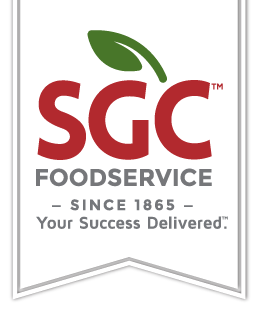It’s a tough time for restaurants—the return to sustained normalcy that consumers and operators anticipated after economic headwinds have stalled COVID-19. Although supply chain problems appear to be receding, mainly because operators have solved handling shortages and delays, inflation and the specter of recession are putting forth new hurdles for operators to jump over after already being depleted by the last couple of years of the pandemic. While signs point to a challenging beginning of the new year, the latter part of 2023 should brighten as we emerge from high inflation and a weak economy.
Recession Looms
The food service industry’s recovery is up against significant roadblocks. Inflation has reached levels unseen in four decades, especially in food categories, while federal interest rate hikes intended to cool off demand have shaken investor confidence. Although unemployment remains low and consumer finances are relatively stable, stimulus funds have dried up, and savings rates are down. There is reason for optimism in the coming year, as any recession is expected to be relatively mild. At the consumer level, increasingly expensive groceries will further shrink the perceived value gap between food at home versus food away from home, making dining out more attractive. And while restaurant order and visit frequency will remain flat or may even diminish, consumers’ desire to maximize each occasion will be a lifeline for operators.
On-Premises Dining
Consumers’ gradual return to on-premises occasions shows that the industry’s demotion of dining rooms may have been premature. Years of social distancing and restrictions have created a pent-up demand for an experience beyond a simple meal. At the same time, workers’ reappearance at offices, increased travel, and lengthier time windows for pickup at busy units make placing an order and eating on-site more attractive. As consumers continue to rebalance their restaurant habits, this on-premises spike will challenge operators short of ideal staffing levels and pinched by inflation. In the long term, the outlook still looks brighter for off-premises occasions, with on-premises dining projected to fall short of reaching pre-pandemic levels.
The Grain
Highly comforting grain products with a high-profit margin, including breads and pastas, will shine in 2023. Operators will harness the versatility of flour by innovating with traditional dishes, such as English muffin pizzas, focaccia French toast, fried lasagna, and vast global options. Expect a spotlight on rice in new preparations, such as aging and international applications. As for other grains, millet and teff will become more commonplace gluten-free alternatives, while freekeh and emmer will give ever-popular bowls new life. And grains, generally, will extend to desserts, drinks, and breakfast. Years of social distancing and restrictions have created pent-up demand for an experience.
Blurred LSR Lines
The playing field across limited service is increasingly evening out. For quick-service and fast-casual restaurants, rising food costs and inflation-fueled consumer price sensitivity are shrinking the value gap. Fast casual’s stake in food quality is being debunked as consumers fail to notice a distinction between burgers, chicken wings, or tacos sourced from these segments when ordered and consumed at home. This blur within limited service will widen these operators’ competitive set and force consumers to prioritize occasions and cravings over value, convenience, and quality when making dining decisions. Watch for limited-service operators to distinguish their brands through refreshed decor, signature menu introductions, enhanced loyalty programs, and seamless service.
The Power of Preserving
Pickling and fermenting preparations are having a moment. Not only do these preparations promote ingredient preservation and health connotations, but they also allow for unique culinary experimentation. Expect pickling to extend to everything from proteins and French fries to herbs and nuts, while pickled ingredients will top unexpected dishes. At the bar, pucker up with sour cocktails containing fermented, gut-healthy ingredients, such as kombucha, miso, and sake. Lastly, look to menus to cite more specific preserving processes, such as Lacto-fermentation (the use of bacteria to create lactic acid), to provide consumers with scientific transparency.
Workers Unite
Historically, worker activism has lagged in food service. But in 2022, an uptick in labor union activity saw major chains facing employee demands around more predictable schedules, better benefits, and higher pay. More power falling to employees will continue next year as union negotiations play out and legislation at the state and local levels establishes new baselines for hospitality workers, with wages as high as $22 per hour proposed in California. Even without new regulations, employees will feel encouraged by their designation as essential workers during the pandemic and by the continued struggle of operators to fill staff positions.
Pink Everything
In 2023, get ready to be tickled pink. In the fun, nostalgic realm, expect bubblegum flavors, funfetti, and new maraschino infusions to surprise and delight. This happy, photogenic color for food and drink also denotes antioxidant-rich health benefits in some cases. And while nutritious ingredients like strawberry puree and dragon fruit are already quickly growing on menus, newer pink-forward fare that nourishes will flourish. Pink variations on classics, including pineapple, salt, celery, and peas, will thrive alongside pink-hued berries and fruits.

